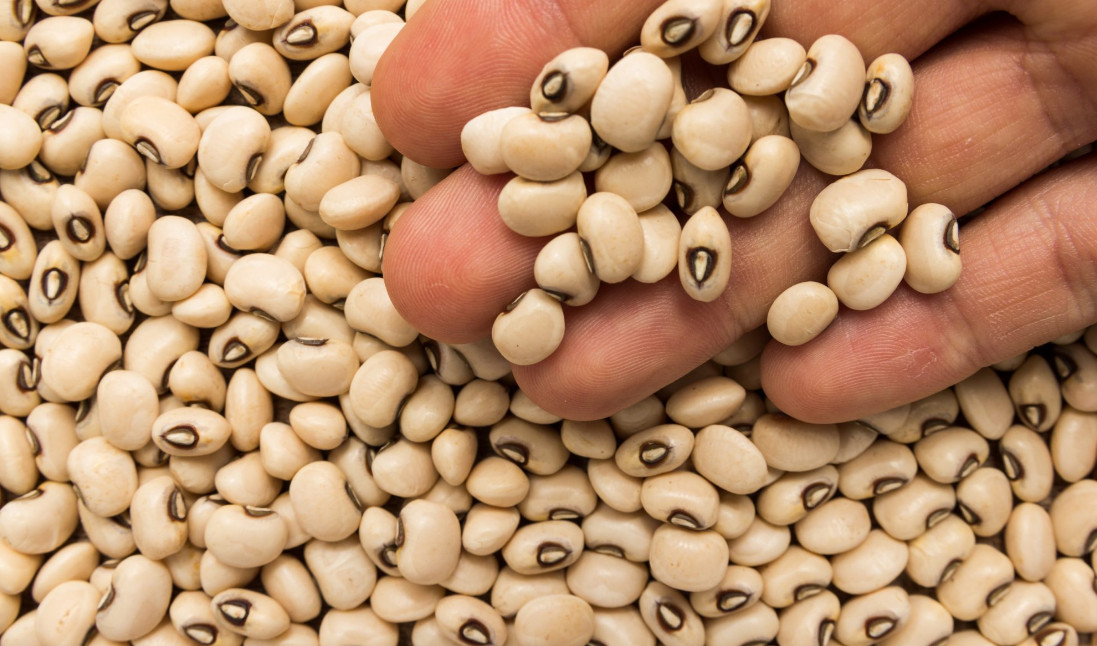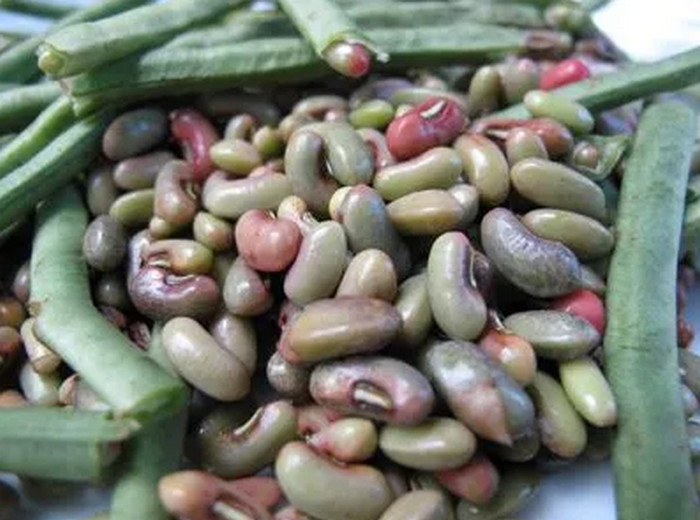Welcome to our blog post about the fantastic health benefits of cowpeas! If you’re looking for a delicious and nutritious addition to your diet, look no further than this humble legume. Cowpeas, also known as black-eyed peas or southern peas, are packed with essential nutrients and offer a range of medicinal properties that can enhance your overall well-being. In this article, we will explore everything there is to know about cowpeas – from their description and appearance to their nutritional value and potential side effects. So sit back, relax, and prepare to discover why cowpeas deserve a spot on your plate!

What is Cowpea
Cowpea (Vigna unguiculata), also known as black-eyed pea, southern pea, and crowder pea, is an annual herbaceous legume from the genus Vigna. It is native to Africa and Asia but is now grown worldwide.
- Scientific name: Vigna unguiculata
- Other names: black-eyed pea, southern pea, crowder pea, lobiya, coupe, wake, bean
- Description: Cowpea is a bushy or vine-like plant that grows about 1-2 feet tall. It has trifoliate leaves (three leaflets per leaf) and white, purple, or pale-yellow flowers. The pods are cylindrical and contain 2-4 seeds.
- Appearance: Depending on the variety, Cowpeas can vary in size, color, and shape. The seeds are typically round or oval and can be white, black, brown, or speckled. The pods are green, yellow, or brown.
- Habitat: Cowpeas can be grown in various soils but prefer well-drained, sandy loam. They are tolerant of drought and heat, but they do not tolerate waterlogging.
- Taste: Cowpeas have a mild, nutty flavor. They can be eaten fresh, dried, or canned.
- Size: Cowpeas can range from 1/2 inch to 1 inch in diameter.
- Color: Cowpeas can be white, black, brown, or speckled.
- Seeds: Cowpeas have a single seed per pod. The seeds are typically round or oval and are about 1/4 inch in diameter.
- Pods: Cowpeas have cylindrical pods about 2-3 inches long. The pods are green, yellow, or brown.
- Nutritional characteristics: Cowpeas are excellent protein, fiber, and vitamins A and C sources. They are also a good source of iron and folate.
Cowpeas are a versatile crop that can be used in various dishes. They can be cooked and eaten as a vegetable or ground into flour and used to make bread, cakes, and other baked goods. Cowpeas can also be sprouted and eaten as a salad green.
In the Philippines, especially in Batangas, a cowpea variety called “Kibal” is very popular. It’s called “Pungko nga balatong” in Negros Occidental.

Cowpeas are a valuable crop for many reasons. They are a good food source, drought-tolerant, and can improve soil fertility. As such, they are an essential crop for many farmers around the world.
Cowpea Nutrition Per 100g
Cowpeas, also known as black-eyed peas or southern peas, are a type of legume often consumed for their nutritional value. Here is the approximate nutritional content of cowpeas per 100 grams when cooked from dried beans:
- Calories: 116 kcal
- Protein: 8.3 grams
- Carbohydrates: 20.8 grams
- Dietary Fiber: 3.6 grams
- Sugars: 4.2 grams
- Fat: 0.6 grams
- Vitamins and Minerals:
- Vitamin A: 8 IU
- Vitamin C: 4.1 mg
- Vitamin K: 1.4 µg
- Folate (Vitamin B9): 54 µg
- Thiamin (Vitamin B1): 0.2 mg
- Riboflavin (Vitamin B2): 0.1 mg
- Niacin (Vitamin B3): 0.6 mg
- Vitamin B6: 0.1 mg
- Calcium: 27 mg
- Iron: 2.5 mg
- Magnesium: 48 mg
- Phosphorus: 115 mg
- Potassium: 278 mg
- Zinc: 0.8 mg
Please note that these values can vary slightly depending on factors such as the cooking method and the specific variety of cowpeas. These values are also based on cooked cowpeas without adding seasonings or sauces. Cowpeas are a good source of protein, dietary fiber, and various vitamins and minerals, making them a nutritious addition to a balanced diet.
Medicinal and Health Benefits of Cowpeas
Cowpeas offer a range of medicinal and health benefits due to their nutritional profile and various bioactive compounds. Here are some of the potential health benefits of cowpeas:
- Rich Source of Nutrients: Cowpeas are packed with essential nutrients such as protein, dietary fiber, vitamins (like folate, vitamin A, and vitamin C), and minerals (such as iron, magnesium, and potassium), which are crucial for overall health and well-being.
- Heart Health: The fiber, potassium, and magnesium content in cowpeas can help promote heart health by lowering blood pressure, reducing the risk of hypertension, and improving overall cardiovascular function.
- Weight Management: The high fiber and protein content in cowpeas can promote a feeling of fullness, aiding in weight management by reducing overall calorie intake.
- Digestive Health: Dietary fiber in cowpeas supports digestive health by preventing constipation, promoting regular bowel movements, and fostering a healthy gut microbiome.
- Blood Sugar Control: Cowpeas have a low glycemic index and can help stabilize blood sugar levels, making them a suitable food choice for individuals with diabetes or those at risk of developing diabetes.
- Bone Health: Cowpeas contain minerals such as calcium, magnesium, and phosphorus that contribute to bone health and may help reduce the risk of osteoporosis.
- Eye Health: Cowpeas contain vitamin A and other antioxidants that support eye health and may help reduce the risk of age-related macular degeneration and cataracts.
- Cancer Prevention: Some studies suggest that the antioxidants and phytochemicals in cowpeas may have protective effects against certain types of cancer by reducing oxidative stress and inflammation.
- Anti-Inflammatory Effects: Bioactive compounds in cowpeas, including flavonoids and polyphenols, possess anti-inflammatory properties, which may help reduce the risk of chronic inflammatory conditions.
- Antioxidant Properties: Cowpeas are a source of antioxidants, which can help neutralize harmful free radicals in the body and protect cells from oxidative damage.
- Improved Immune Function: The vitamins and minerals in cowpeas, especially vitamin C and zinc, can support a healthy immune system, helping the body defend against infections.
- Pregnancy Support: Cowpeas are an excellent source of folate (vitamin B9), essential for pregnant women as it helps prevent neural tube defects in developing fetuses.
It’s important to note that while cowpeas offer numerous health benefits, they should be consumed as part of a balanced diet. If you have specific health concerns or dietary restrictions, it’s advisable to consult with a healthcare professional or nutritionist for personalized advice on incorporating cowpeas into your diet.
Side Effects and Disadvantages of Cowpea
1. Digestive Issues: While cowpeas are generally easy to digest, some individuals may experience digestive issues such as bloating, gas, or stomach discomfort after consuming them. This could be due to the high fiber content in cowpeas, which can sometimes be difficult for sensitive digestive systems to handle.
2. Allergic Reactions: Although rare, some people may have an allergic reaction to cowpeas. Symptoms may include itching, hives, swelling of the face or throat, or difficulty breathing. If you notice any adverse reactions after eating cowpeas, it’s important to seek medical attention immediately.
3. Purine Content: Cowpeas contain purines that can break down into uric acid in the body. Excessive consumption of purine-rich foods like cowpeas can lead to increased levels of uric acid and potentially contribute to gout flare-ups in individuals who are predisposed to this condition.
4. Antinutrients: Like many other legumes, cowpeas contain antinutritional factors like phytic acid and tannins. If consumed excessively, these compounds can interfere with nutrient absorption in the body and reduce the bioavailability of minerals like iron and zinc.
5. Flatulence: Cowpeas’ high fiber content can cause excessive gas production in some individuals, leading to flatulence or uncomfortable bloating sensations.
These side effects are relatively uncommon, and most people can enjoy cowpea’s health benefits without experiencing any negative effects. However, if you have any concerns about including cowpeas in your diet or a pre-existing medical condition related to any of these side effects mentioned above, it is always recommended to consult with a healthcare professional beforehand.
Recipes: How to Cook Cowpea
Cowpeas can be cooked in various forms, whether canned, fresh, or dried. Here are basic instructions for cooking cowpeas in these different forms:
1. Dried Cowpeas:
Ingredients:
- Dried cowpeas
- Water
- Salt (optional)
- Seasonings (optional)
Instructions:
- Rinse and Sort: Before cooking dried cowpeas, rinse them thoroughly under cold running water and remove any debris or damaged beans.
- Soak (Optional): Soaking dried cowpeas overnight or for at least 4-6 hours can reduce cooking time and make them easier to digest. If you soak, use about 3 cups of water for every 1 cup of dried cowpeas.
- Cook: Drain the soaked cowpeas, if applicable. In a large pot, add the cowpeas and enough water to cover them by about 2 inches. Bring to a boil, then reduce the heat to a simmer. Cook for about 45 minutes to 1 hour or until the cowpeas are tender but not mushy. If you didn’t soak them, cooking time may be longer.
- Season: Add salt and any desired seasonings (such as garlic, onion, or herbs) during the last 10-15 minutes of cooking. Be cautious with salt; adding it too early can toughen the cowpeas.
2. Fresh Cowpeas:
Ingredients:
- Fresh cowpeas (also known as field peas)
- Water
- Salt (optional)
- Seasonings (optional)
Instructions:
- Rinse and Shell: Rinse the fresh cowpeas thoroughly under cold running water. Shell them by breaking open the pods and removing the peas.
- Cook: In a pot, add enough water to cover the fresh cowpeas by about an inch. Bring to a boil, then reduce to a simmer. Cook for about 15-20 minutes or until they are tender. Fresh cowpeas cook relatively quickly.
- Season: Season with salt and any desired seasonings during the last few minutes of cooking.
3. Canned Cowpeas:
Ingredients:
- Canned cowpeas
- Water (optional)
- Salt (optional)
- Seasonings (optional)
Instructions:
- Drain and Rinse: Open the can of cowpeas and drain the liquid. You can rinse them with water to remove excess sodium and improve flavor.
- Heat (Optional): While canned cowpeas are already cooked, you can heat them on the stove or in the microwave if you prefer them warm. Heat them over medium heat in a saucepan for a few minutes or microwave them for 1-2 minutes.
- Season: Season with salt and any desired seasonings to taste.
Cowpeas can be enjoyed in various dishes, including soups, stews, salads, and as a side dish. Customize the seasoning and preparation method to your taste and your specific recipe.
The Bottom Line
Incorporating cowpeas into your diet can be a wise choice for various reasons. This nutrient-dense legume offers a wide range of health benefits, making it an excellent addition to any meal plan.
Cowpeas contain essential nutrients like protein, fiber, vitamins, and minerals. They promote healthy digestion, support weight management, and help reduce the risk of chronic diseases such as diabetes and heart disease. Additionally, cowpeas offer antioxidant properties that protect against cell damage and inflammation.
However, while cowpeas have numerous advantages, there may also be some potential side effects or disadvantages associated with their consumption. Some individuals may experience digestive discomfort or allergic reactions when consuming cowpeas. It’s always recommended to consult with a healthcare professional if you have any specific concerns or medical conditions.
Whether you choose canned cowpeas for convenience or prefer cooking them from scratch using dried beans or fresh pods, there are countless delicious recipes available to explore. From soups and stews to salads and stir-fries, cowpeas’ versatility allows you to get creative in the kitchen while reaping their nutritional benefits.
See Also:
- Tausi: 10 Health Benefits of Black Beans, Description, and Side Effects
- 10 Health Benefits of Adzuki Beans, Description, and Side Effects
